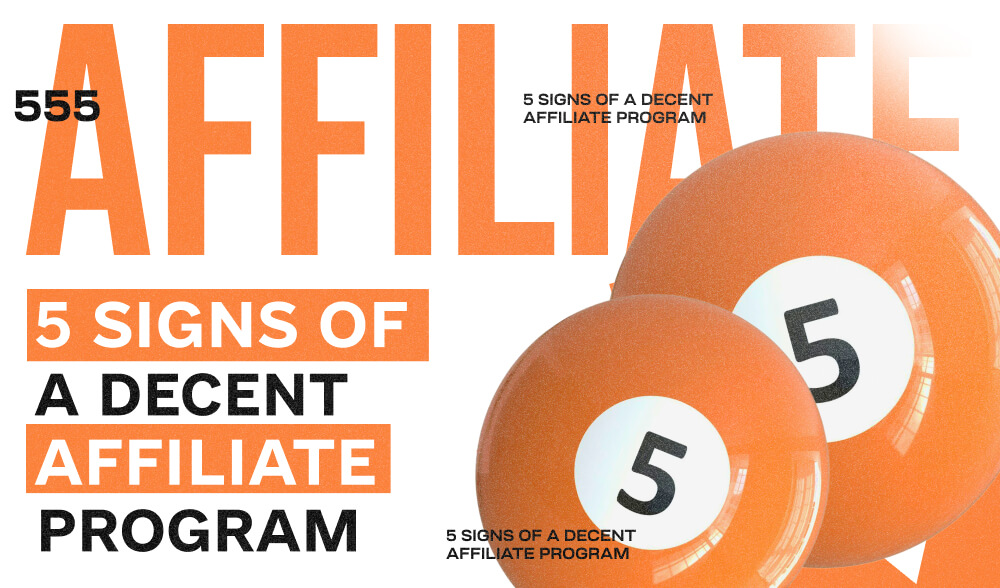Don't miss interesting news

“Hey brother, the offer is fine, just put in at least 200 bucks and everything will be fine” – and so you do. And then there is silence. The manager disappears, the statistics jump, and the upside is zero. There are a couple of other similarly “angry” people in the chat. Sound familiar?
In niches where you don’t just buy traffic but give it to an affiliate, choosing an affiliate service is not just about “who to work with”. It is literally whether you will get paid at all.
Normal affiliates exist. But it’s like finding an adequate landlord in Kyiv: you need to be able to filter signals at the stage of correspondence.
In this text, we have collected 5 clear signs that will help you understand whether you are looking for a service that can be used for a long time or just another scam on a test budget.
A normal affiliate has data that is not a secret behind seven APIs. You should see the entire funnel: how many clicks, what EPC, what CR, where the traffic dropped, at what stage the lead froze. If instead, you see a sign that says “check with the manager for details,” you should ask a logical question: what else are they hiding?
A reliable affiliate service should have a full admin panel, where you can see not just the overall result, but also dig deeper:
Subs analytics are especially important. Because without it, you won’t cut out the garbage, you won’t see the working connections, you won’t be able to scale what really works. It’s like trying to set a target without knowing where the client was yesterday.
Also pay attention to:
A real red flag when there are no statistics in the affiliate program, and the manager says: “We will show you everything after the upload.”
No. If metrics are only for managers and not for you, then run away. And go only where they trust not words, but numbers.
A manager who was “in touch 24/7” and after the first traffic drain turns into a phantom with two ticks on Telegram is a classic of the genre. This is the first wake-up call that the affiliate is not interested in long-term cooperation, but just wants to squeeze a test budget out of you.
A normal affiliate has a manager who not only accepts traffic but actually works with you:
Another important signal: the presence of real support;
Bonus – public activity:
A silent partner is like the Binance support team in 2021: technically, it exists, but in fact, it does not exist. If the communication is only up to the moment when you have not filled up, and then “write to the mail”, it is better to look for another one right away. Because where the manager is not in a dialog, your profit can disappear just like his online one.
Money is the end of the game. If an affiliate does not pay or pays “someday”, it is not an affiliate, but a casino. In a normal affiliate service, everything is clear: you know when, how much, and why. And if something goes wrong, you are warned about it, and do not disappear “for clarification.”
An affiliate who really values your traffic doesn’t play dumb when it comes to money. Your work should be paid for without riddles and dances with managers. And if they cannot guarantee this, it is better not to test the offer, but to test a new affiliate immediately.
The worst thing that can happen after draining the budget is not a minus, but “0 upsell” from the offer that was promised as a top one. You poured, the traffic was there, the analytics were okay, but in the end: “the offer has closed”, “the ad is not upvoted”, “this is a test offer, we have not yet released it to the public”. These are classic showcases – when offers seem to be available, but in fact, they are either not allowed to use them or they have not been working for a long time.
Fact: If an offer is constantly “paused”, “the update will be tomorrow”, “you need to agree with the advertiser”, it is not an offer, but a phantom. Work with affiliates where offers are not a marketing fan service, but a real tool for filling and earning money. And where your question “what to upload?” is not answered with “what do you have?” but with specifics.
The difference between a “one-time” partner and a “long-term” partner is felt even before the first drain. In the first case, they throw you into a general chat, give you a link, and disappear. In the second case, they work with you as a partner, not a one-time traffic supplier.
In a good partnership, you are not just “accepted into the network”. You are integrated into the process, given tools, invited to events, and developed. And if you feel like you are not pulling money from the affiliate, but earning it together after a conversation with the manager, this is a very good sign.